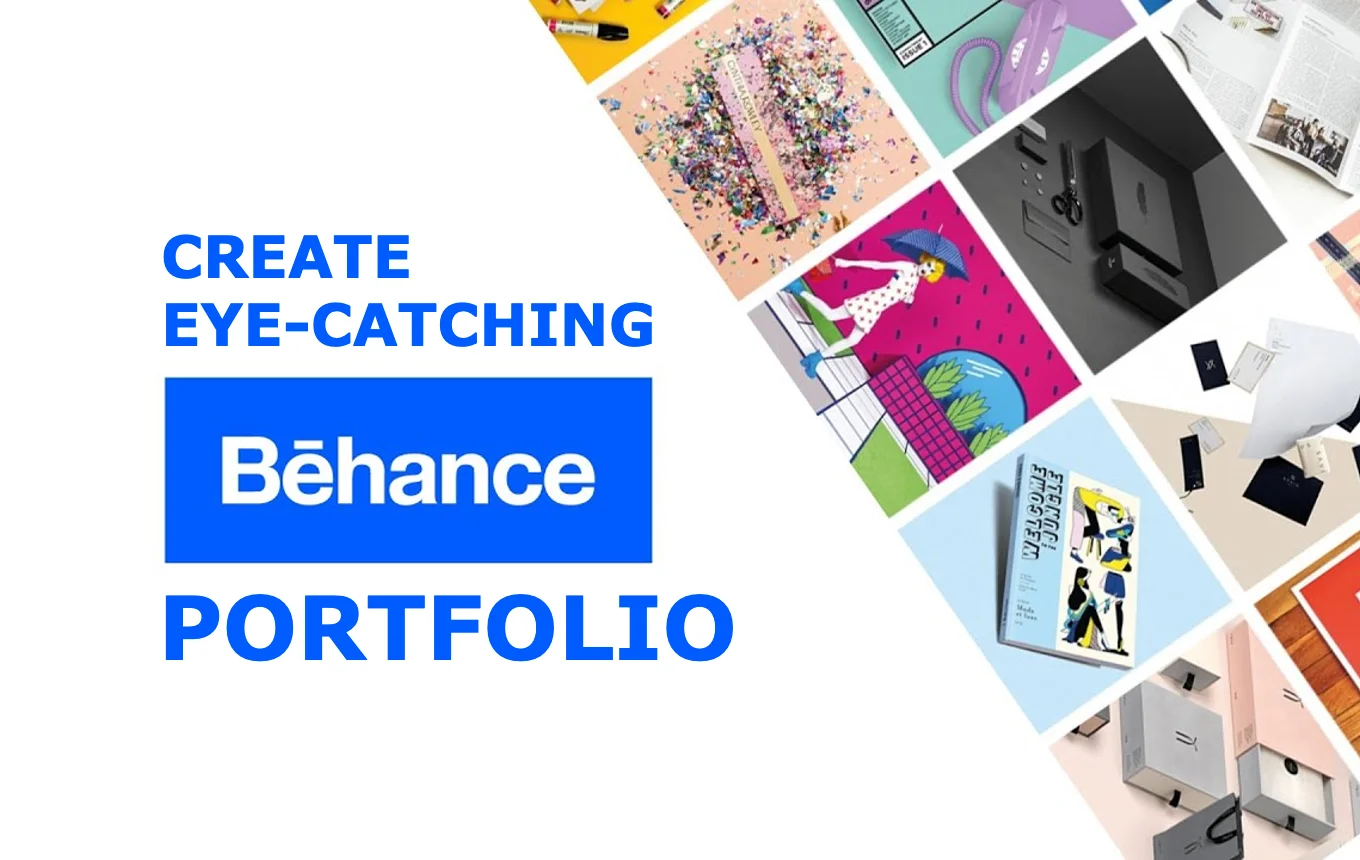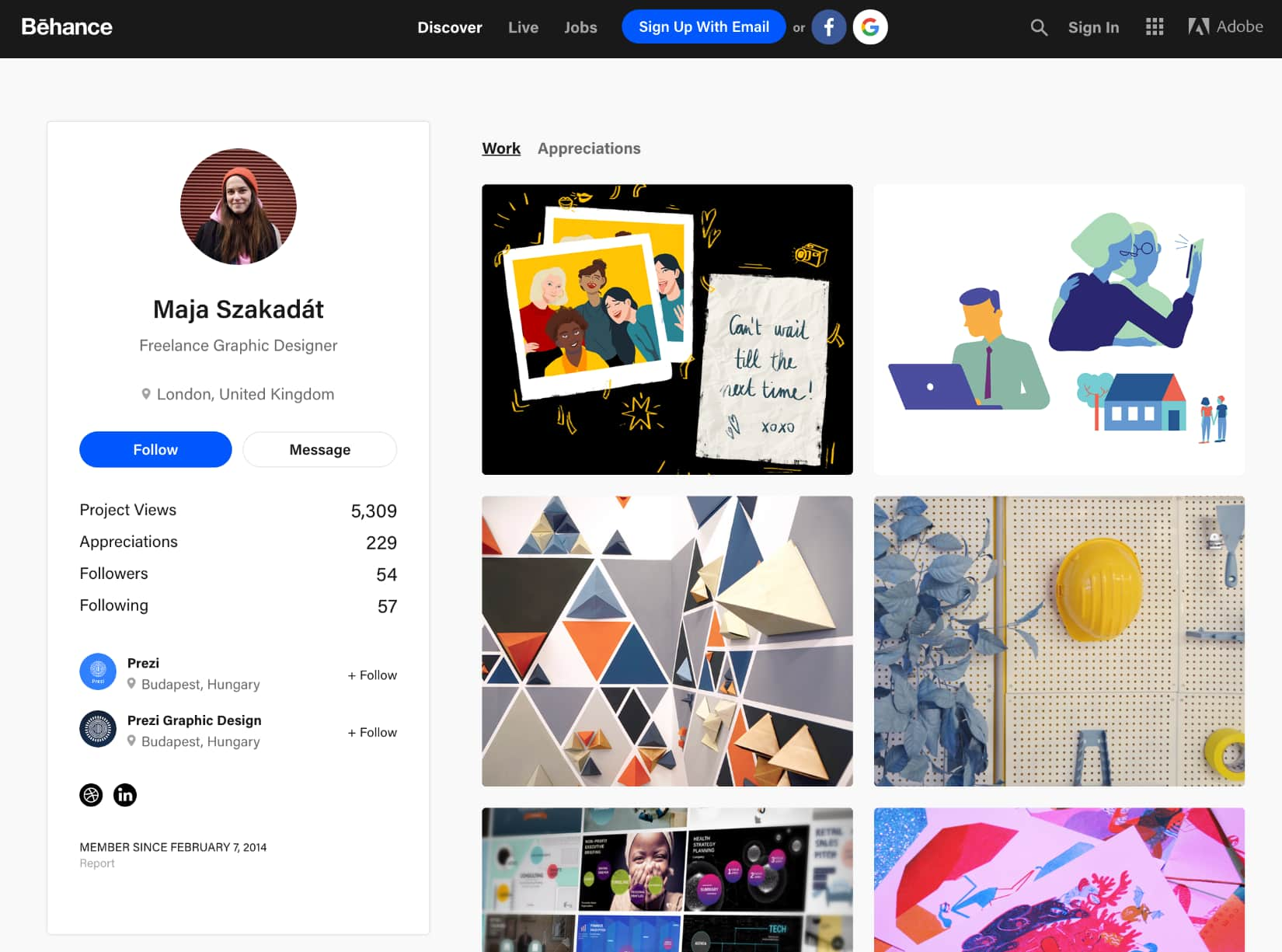In today's digital age, having a strong online portfolio is essential for anyone looking to make a mark in the creative field. Behance, a platform owned by Adobe, has emerged as one of the most popular places for designers, illustrators, photographers, and other creative professionals to showcase their work. But how do you make your Behance portfolio not just functional, but also clean, professional, and eye-catching? In this post, we’ll explore the nuances of establishing a powerful
Understanding Behance and Its Importance

Behance is more than just an online portfolio site; it’s a vibrant community where creative minds gather to share, inspire, and connect. Here’s why understanding Behance and its significance can make a real difference in your career:
- Showcase Your Work: Behance allows you to display a high-quality portfolio of your skills and projects. You can upload images, videos, and even interactive content that showcases your talents.
- Connect with Peers: The platform provides opportunities to network with other creatives. Comment on others’ work, get feedback, and perhaps even collaborate on projects.
- Job Opportunities: Many companies actively browse Behance for talent. A well-designed portfolio can capture the attention of recruiters looking for top-notch creatives in various industries.
- Feedback and Growth: Uploading your work offers a chance to get constructive criticism from other professionals. This feedback can help you enhance your skills and refine your projects further.
- Build Your Brand: Your Behance portfolio serves as an extension of your personal brand. A clean and professional presentation can effectively communicate your style and ethos to potential clients or employers.
With all these benefits at your fingertips, investing time and effort into creating an impressive Behance portfolio is definitely worth it. Understanding its importance is the first step toward maximizing its potential in your creative career.
Also Read This: Writing Copyright Information for Adobe Stock Images
Key Elements of a Behance Portfolio

Creating a standout Behance portfolio is crucial for showcasing your work and grabbing the attention of potential clients or employers. Here are some key elements you should definitely include:
- High-Quality Images: Always use high-resolution images for your projects. Blurry or pixelated images can detract from the professionalism of your work.
- Project Description: Provide a detailed yet concise description of each project. This should include your thought process, the problem you were solving, and the final outcome.
- Process Documentation: Show your workflow! Including sketches, drafts, and stages of the project can provide insight into your creative process and add depth to your portfolio.
- Consistent Branding: Make sure your portfolio reflects your personal brand. This includes using the same color schemes, fonts, and styles across all projects.
- Showcase Your Best Work: Quality over quantity! Focus on showcasing your top 5-10 pieces rather than a large quantity of mediocre work. Make each piece count.
- Contact Information: Don’t forget to include a way for people to reach out to you. Add your email address or links to social media profiles where you’re active.
- User-Friendly Navigation: Structure your portfolio so that visitors can easily navigate between your different projects. Clear categories can help streamline this process.
Also Read This: Downloading Adobe Stock into Adobe Illustrator
Tips for Achieving a Clean Design
A clean design is essential for making your Behance portfolio visually appealing and easy to navigate. Here are some practical tips for achieving that polished look:
- Whitespace is Key: Don’t crowd your designs! Give elements space to breathe with adequate margins and padding. Whitespace helps to guide the viewer's eye and makes your content more digestible.
- Limit Color Palette: Choose a limited color palette that reflects your personal brand. Relying on two or three primary colors helps in creating a cohesive look throughout your portfolio.
- Consistent Typography: Stick to one or two fonts for your entire portfolio. Combining too many fonts can create visual chaos. Ensure fonts are legible and align with the look you want.
- Simple Layout: Use a grid or a straightforward layout. A well-structured design allows your work to shine without distractions. Consider a traditional column format for easy reading.
- Optimize Image Sizes: Large images can cause loading issues. Optimize your images for web use while still maintaining quality. This step makes a huge difference in user experience.
By focusing on these key elements and design tips, you'll be well on your way to creating a Behance portfolio that not only looks great but also effectively communicates your skills and creativity!
Also Read This: How to Add a Project to a Collection on Behance Organizing Your Portfolio Effectively
Creating a Professional Aesthetic
When it comes to designing your Behance portfolio, establishing a professional aesthetic is crucial. A polished look not only showcases your work but also reflects your brand and level of expertise. Here are some key elements to consider:
- Color Scheme: Choose a color palette that resonates with your personal brand. Stick to two to three primary colors and ensure they complement each other. For example, a monochromatic scheme can convey elegance, while a contrasting palette can bring vibrancy.
- Typography: Select clean, readable fonts. Limit yourself to two or three font families—one for headings, one for body text, and perhaps another for accents. This keeps your portfolio consistent and easy to read.
- Layout: Organize your work in a grid or a consistent format. Use ample whitespace to prevent the portfolio from feeling cluttered. A well-structured layout guides the viewer’s eye and makes navigation intuitive.
- Imagery: Utilize high-quality images that accurately depict your work. It's a digital showcase—it needs to shine! Ensure the visuals are sharp, well-lit, and professional.
- Consistent Branding: If you have a personal logo, incorporate it prominently. This reinforces your brand identity and makes your portfolio memorable.
Remember, the goal of creating a professional aesthetic is to make your work shine. It should clearly communicate who you are as a designer and what you bring to the table while being visually cohesive and engaging.
Also Read This: How to Edit a Vector Image
Making Your Portfolio Eye-Catching
In a sea of portfolios, you want yours to stand out like a beacon! Making your Behance portfolio eye-catching requires a bit of creativity and an understanding of design principles. Here are some tips to help you achieve that:
- Unique Project Thumbnails: Instead of using default images, create custom thumbnails for each project. A well-designed thumbnail can intrigue viewers and encourage them to explore further.
- Animation and Motion: If applicable, consider incorporating subtle animations to highlight your work. Motion can grab attention and illustrate your capabilities in dynamic design.
- Engaging Project Descriptions: Write compelling project narratives. Instead of just stating the facts, tell a story. What were the challenges? What was your thought process? This engages the viewer on a more personal level.
- Showcase Your Process: Include behind-the-scenes sketches or drafts. Showing your creative process not only highlights your talent but also makes your work more relatable and engaging.
- Use Visual Hierarchy: Guide the viewer's eye by using size, color, and positioning strategically. Highlight your best work at the top, and ensure the most important information stands out.
Ultimately, making your portfolio eye-catching means blending your unique style with effective design techniques. Make sure it captures attention while seamlessly showcasing your talents.
Also Read This: Understanding Adobe Stock Photo Licensing
Incorporating Personal Branding
When it comes to creating a standout Behance portfolio, personal branding is your secret weapon. It’s what sets you apart from the sea of creativity out there. So, how do you incorporate personal branding into your portfolio? Let’s break it down.
- Define Your Brand Identity: Start by identifying what makes you unique. Are you a minimalist designer, a vibrant illustrator, or a tech-savvy web developer? Create a mood board that reflects your style, values, and the message you want to convey.
- Consistent Visual Elements: Choose a color palette, typography, and overall aesthetic that aligns with your brand. For instance, if you love earthy tones, make sure your portfolio uses these consistently across all sections.
- Craft a Personal Logo: A logo can make your work instantly recognizable. Even if you’re not a graphic designer, using simple design tools can help you create something that resonates with your audience.
- Engaging About Section: Your bio is more than just a summary; it’s a chance to tell your story. Share your background, your journey in design, and what inspires you. Make it engaging and relatable!
- Social Media Links: Link your portfolio to your social media accounts to create a cohesive online presence. This way, potential clients or collaborators can easily explore more about you.
Incorporating these personal branding elements will not only enhance your portfolio’s aesthetics but also help build a connection with your viewers. Remember, your portfolio is an extension of yourself, so let it shine!
Also Read This: Mastering Tags on Behance for Enhanced Project Visibility
Best Practices for Showcasing Your Work
Now that you've established your personal brand, let’s dive into some best practices for showcasing your work on Behance. After all, how you present your projects can be just as crucial as the projects themselves!
| Practice | Description |
|---|---|
| Quality Over Quantity | Curate your projects carefully. It's better to showcase fewer high-quality pieces than to jam-pack your portfolio with everything you’ve ever done. |
| Use High-Resolution Images | Make sure your visuals are crisp and professional. Blurry or low-quality images can undermine your hard work. |
| Include Process Work | Showcase not just the final product but also the steps you took to get there. Including sketches or drafts provides insight into your creative process. |
| Write Engaging Descriptions | Your written content should complement your visuals. Describe the challenges, solutions, and outcomes of each project. This gives context to your work. |
| Organize Projects Logically | Group similar works together or arrange your projects in a way that tells a story. This makes it easier for viewers to navigate through your portfolio. |
By implementing these best practices, you'll not only create a stunning portfolio but also ensure that your work communicates effectively with potential clients or collaborators. Happy showcasing!
Designing a Clean, Professional, and Eye-Catching Behance Portfolio
Creating a standout Behance portfolio is essential for showcasing your work, attracting potential clients, and networking with fellow creatives. A well-designed portfolio not only highlights your projects but also reflects your personal brand. Here are key elements to consider when designing your Behance portfolio:
- Choose a Consistent Theme: Select a cohesive color palette and typography that aligns with your personal style. This creates a professional look that is easy to navigate.
- High-Quality Images: Use only high-resolution images of your work. Avoid pixelated or poorly lit photographs as they can diminish the perceived quality of your projects.
- Effective Project Descriptions: For each project, include concise descriptions that highlight your role, the process, and the outcome. Make sure to convey your thought process and the impact of your work.
Example format:
| Project Title | Role | Outcome |
|---|---|---|
| Brand Identity for XYZ | Designer | Increased brand recognition by 30% |
| Website Redesign for ABC | Lead Developer | Improved user engagement metrics |
- Engaging Case Studies: Incorporate case studies for selected projects to demonstrate your depth of experience and design thinking.
- Responsive Design: Ensure your portfolio looks great on all devices, from desktops to mobile phones.
- Call to Action: Include a clear call to action encouraging visitors to contact you for inquiries or collaborations.
In conclusion, a clean, professional, and eye-catching Behance portfolio can significantly enhance your visibility in the creative industry. By focusing on a consistent theme, high-quality imagery, and detailed project descriptions, you can effectively present your work and impress potential clients.
 admin
admin








